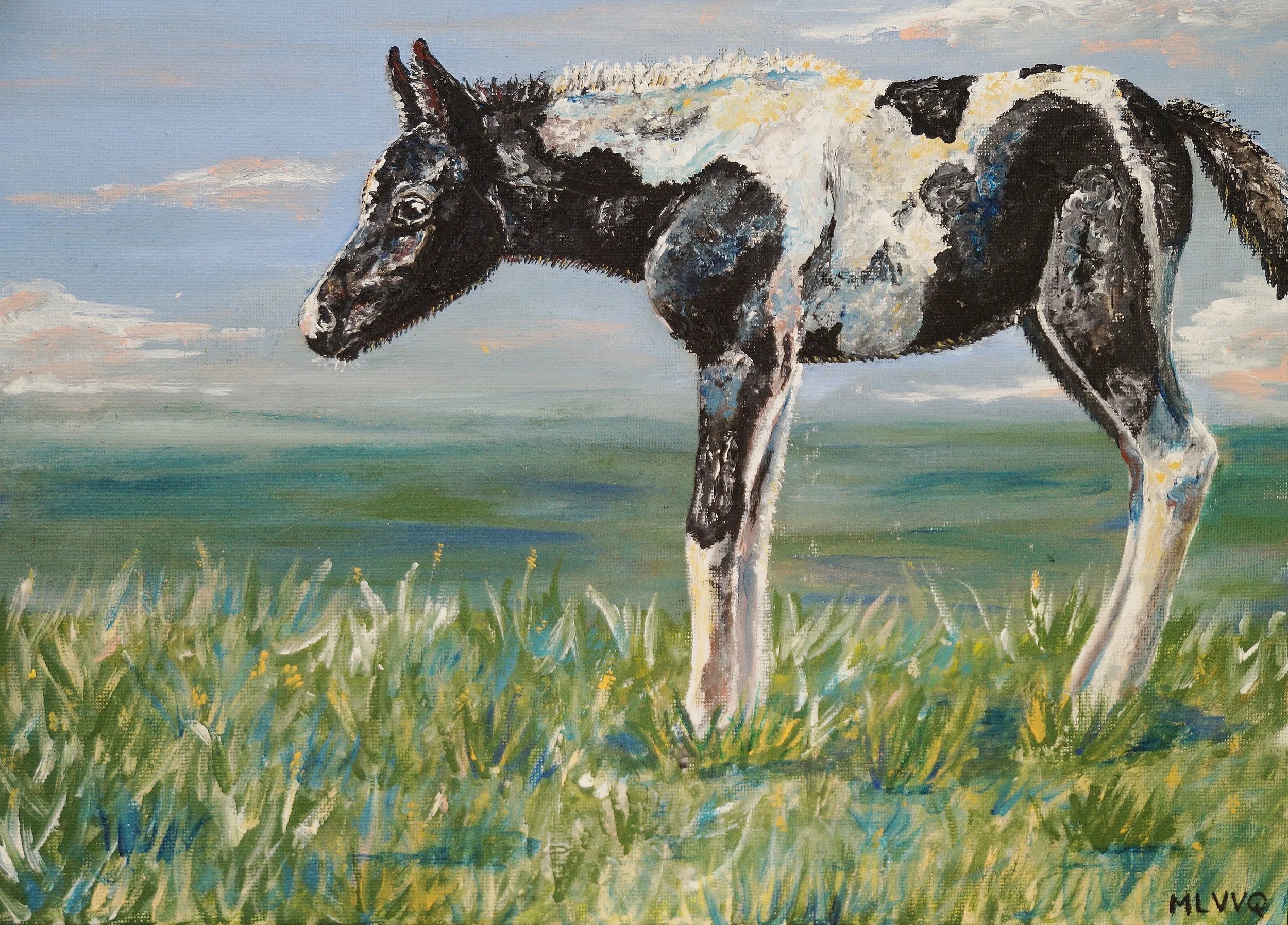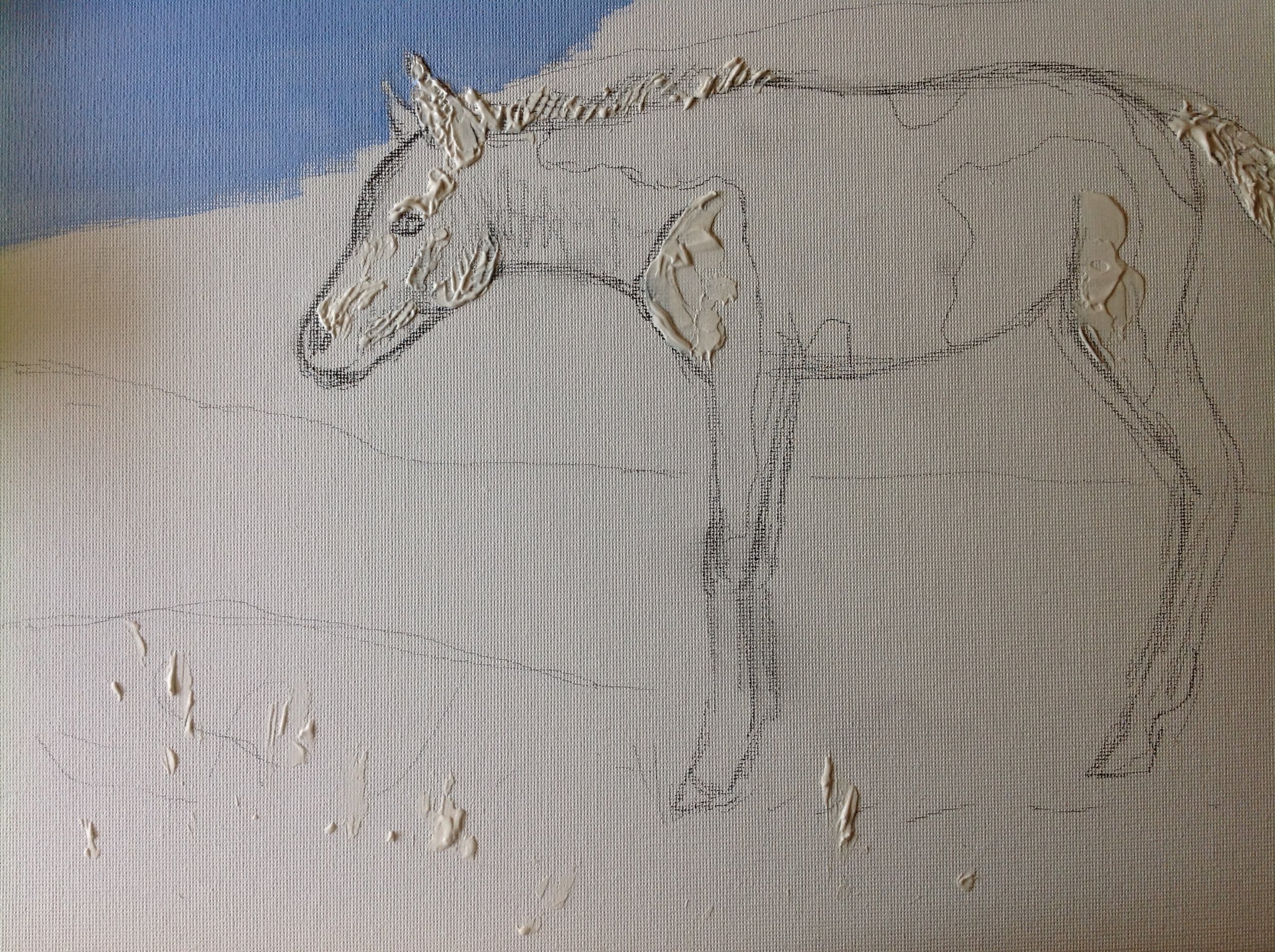There is not one way of creating a painting: it depends on the way the artist works, their style, medium and the time they have to create it. I've talked already about my process but I would like to detail it a bit more here. I've pretty much learnt as I went and there are things I do now I would have liked to know earlier, for instance that you should not spend neither too much time nor too little on the initial sketch, or that it is better when using acrylics, to paint the background before painting the figures, or that you should do more than one layer of paint. When I first started using acrylics (I was 12 or 13 years old), I was so impatient to paint the subject that I would do it first, adding a background afterwards. The result was then rather messy and, because I only used one layer of paint, it looked rather thin on the canvas. I've learnt through my mistakes and my experiments and I now work in a wholly different way.
The painting I will use as an example is called "First Days Of Spring." It shows a very young piebald Dartmoor Hill filly. She was born probably at the end of March and was one of the first foals born on the moor that year (2016). I took the photo reference I used for the painting in early April. The filly was still very small, very shy and kept close to her mother. Because the weather was still cold, she was covered in very thick hair.
I did this painting on a 24 x 33 canvas board. I think it is interesting as an example for two reasons. The first is that it was the first painting on which I experimented using modeling paste to give it more texture. The second is that something went wrong with the background I intended and I had to change it in order to save the painting: I almost gave up on it at one point.
The reference I used showed the filly at the bottom of a hill. There was a tor (a granite rock formation), the bottom of which was visible on the top right corner of the image. I kept this composition in the initial sketch. This is the stage of the painting where I work on the composition and also have to get the size, position and anatomy of the horse as right as I can: it saves a lot of time later. However, I do not detail it too much as it will be painted over and I know I will probably change a few things (such as the position of the legs) as I go.
I then applied the modeling paste in places where I wanted to give texture. This dries rather quickly and becomes very hard. I used a painting knife (a very useful painting tool I'd only just discovered) to do that: you can see on the second photo how I gave the mane texture to help give the impression of hair.
Once this was done, I blocked in the background. Yet I soon realised I was not pleased with the colours and that it did not look right at all. I began adding details to the tor, but it still was a mess. If I had tried to go on with the original background, I would have added shadows, long grass, maybe a rock or two. However, I decided that it was not going to work and that this background would actually overwhelm the filly who was after all my main subject.
I decided to completely change the background which then became blue sky, misty horizon and hills, grass in the foreground. I did not use any reference for it but it is actually a real Dartmoor view. I've used variations of it in many of my paintings. I quite like the contrast between the straight, horizontal lines and the curves of the pony. Here, the soft, blue and green colours would also complement nicely the piebald filly, on which I added more modeling paste, so that she would really stand out. I think theses colours also fitted the mood of the painting well.
After that I painted the first layer over the sketch of the filly, using only black and white. This is not my favorite part of a painting, I call it the ugly stage... But then I can do what I like best: bring the pony to life as I add details, shadows and colours, such as yellow and blue. The blue on the filly and the grass echoes that of the sky and the yellow reflections on the horse make a link with the foreground. I find that the choice of colours is important, especially with a detailed background as they can help make a painting coherent.
When I do details, I always start with the head and always find the legs the hardest. When I'm done with the pony, I tweak a few things on the background: I will, for instance, add shadows and such. And finally, I can sign the painting and call it done!
Prints and cards of "First Days Of Spring" are available. Contact me if you would be interested.









